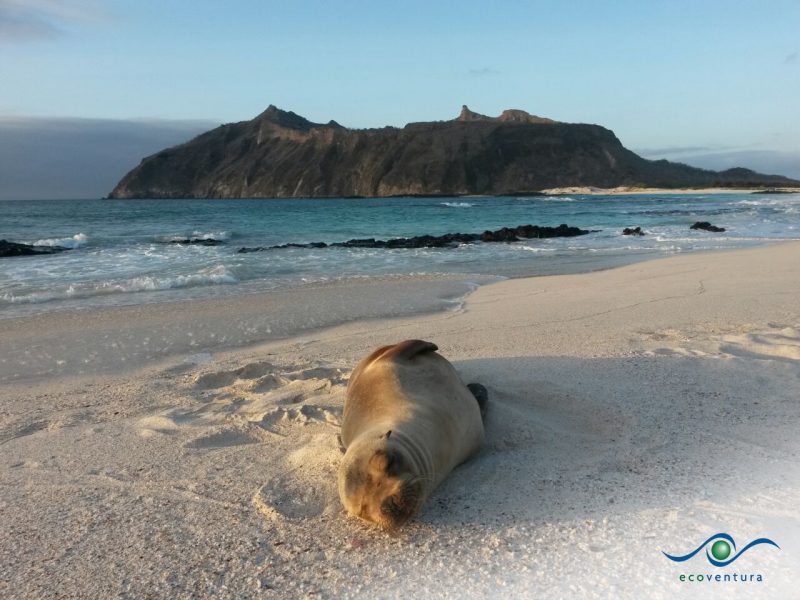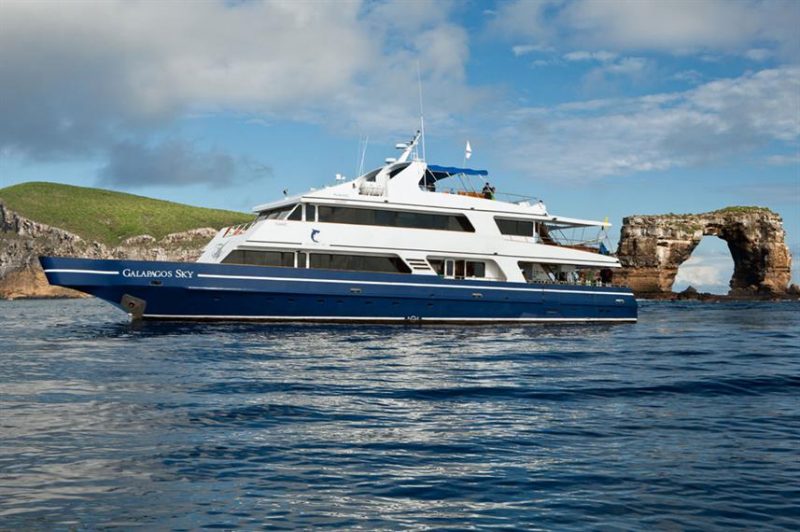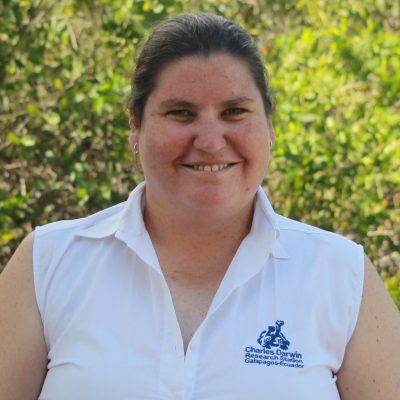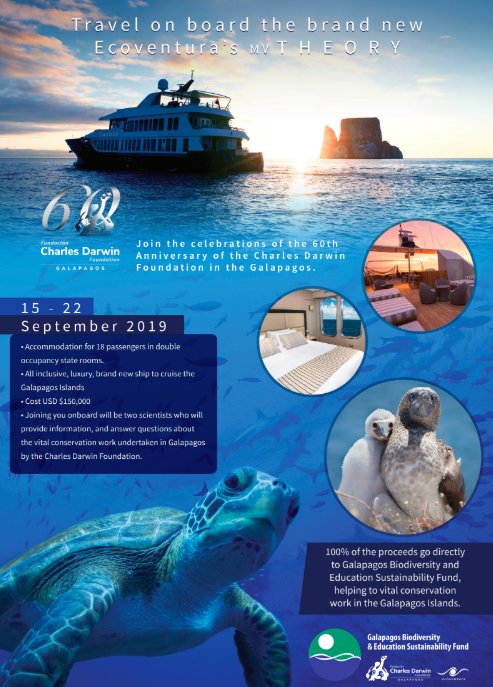This week marks an exciting week for Ecoventura and Galapagos conservation! All proceeds (or net revenue from cabins sold) from this week’s September 2-9 departure on our luxury vessel, the ORIGIN, will be donated to the Galapagos Biodiversity & Education for Sustainability Fund (GBESF).

On July 31, 2017 a Memorndum of Understanding was signed by the leading dignitaries from the Charles Darwin Foundation (CDF) and Ecoventura, with the Galapagos National Park (GNP) as a witness, to establish the Galapagos Biodiversity and Education for Sustainability Fund (GBESF). This fund strengthens conservation in the Galapagos, ensuring the diverse plant, animal, and marine life of the archipelago are here for generations to come. The GBESF helps fund research and conservation projects related to biodiversity including (but not limited to): monitoring trips, community outreach, scientific equipment, and Galapagos National Park Directorate (GNPD) boat maintenance and equipment as well as the support of projects related to education for sustainability, including scholarships for Galapagueños to study at a local or national university.
Ecoventura’s last CDF trip was on board our diving liveaboard yacht, the MV Galapagos Sky, this past spring (from May 13-20) and we had the opportunity to collect and donate over $60,000 to the GBESF!

We hope to continue this success and are very excited to donate all proceeds from this week’s MV ORIGIN cruise to the CDF and the projects they support through the GBESF.
On this week’s cruise, guests on board will enjoy learning from two experts of the Charles Darwin Foundation itself. Please meet these fantastic women dedicated to conservation in the Galapagos…
Jacqueline Rodríguez (Entomologist)

Jacqueline arrived to the CDF in 2014. She currently works on the projects of Terrestrial Invasive Species and Ecological Restoration, including the monitoring of invertebrates in the threatened Scalesia forest on Santa Cruz Island to evaluate the effects of the chemical control of the invasive plant species, like the blackberry. She has also collaborated in the management of the Invertebrates Collection of the Charles Darwin Research Station.
For Jacqueline, it is gratifying to be part of CDF’s staff because she can contribute knowledge and skills to the development of science and conservation of the Galapagos Islands.
Inti Keith (Principal Investigator Marine Invasive Species Project)

Dr. Inti Keith is a Senior Marine Biologist at the Charles Darwin Research Station. She leads the Marine Invasive Species Program in collaboration with the Smithsonian Environmental Research Center (SERC) as well as the long-term Subtidal Ecological Monitoring Project in the Galapagos Marine Reserve (GMR). Inti worked in several different projects such as shark tagging and sea turtle monitoring before doing her Ph.D. on Marine Invasive Species in the GMR.
Her interests lie in understanding the current status of the GMR and to evaluate the impacts non-native species can have on marine biodiversity, ecosystem services, and the health of the GMR. As part of her research, she is interested in the connectivity that exists between the different Marine Protected Areas in the region, which is why she has been working with the Eastern Tropical Pacific Marine Corridor initiative (CMAR) to continue her research throughout the region.
Inti has strong collaborations with the University of Southampton and the National Oceanography Centre (NOC), Williams College, Smithsonian Tropical Research Institute (STRI), and SERC.
About The Charles Darwin Foundation
The Charles Darwin Foundation was established in 1959 and has been supporting scientific research of the archipelago for almost 60 years. Their collaboration with government agencies, scientists, educators, researchers, and volunteers has played an important role in Galapagos conservation, restoration, and sustainable development of the Galapagos. We are proud to partner with this esteemed organization along with the GNP to protect the region for future generations.

Photo credit via CDF
What’s Next? Celebrate 60 Years of the Charles Darwin Foundation!
/

- Accommodation for 18 passengers in double occupancy staterooms.
- All meals and after-excursion snacks, creatively prepared by our culinary school-trained chefs using ingredients sourced from local, sustainable producers.
- All beverages including an open bar policy, featuring wines and spirits, soft drinks, fresh juices, tea, and coffee served complimentarily and the Captain’s welcome and farewell cocktail parties.
- Guided shore and Zodiac excursions twice daily with two expert naturalist guides (one for every ten guests), the lowest ratio in the Galapagos.
- Nightly briefings and lectures providing enrichment on topics relevant to Galapagos throughout the week.
- Instruction in snorkeling technique and use of stand-up paddleboard and multiple kayaks for optional water-based activities. Use of glass-bottom boat for excursions to view marine life.
- Use of wetsuits (3mm full style) and snorkeling equipment (masks, fins, and snorkel).
- Use of all amenities on board including the library, Jacuzzi and Fitness Center equipped with a treadmill, elliptical, free weights, yoga mats, and more.
- Transfers in the islands between the airport with meet & greet services and dock to the vessel in Galapagos.
- A crew of 14 including your Captain, two guides and a full-time concierge to attend to your every need.
Not included in the cruise rate:
- International Airfare to Ecuador (Quito or Guayaquil).
- Hotel accommodation in Ecuador the night before your cruise (although we can assist you with your selection and reservation).
- Airfare from Quito (UIO) or Guayaquil (GYE) to Galapagos (SCY), although we can book your flights through our allotment of seats on Sunday with Avianca.
- Galapagos Entrance fee or Park Tax: The entrance fee to the National Park is $100 for adults and $50 for children 11 and younger and is not included in the cruise rate.
- Transit Control Card – A TCT card or Tarjeta de control de Tránsito is $20 per person and is required by INGALA for all visitors to Galapagos to control migration to the Islands.





